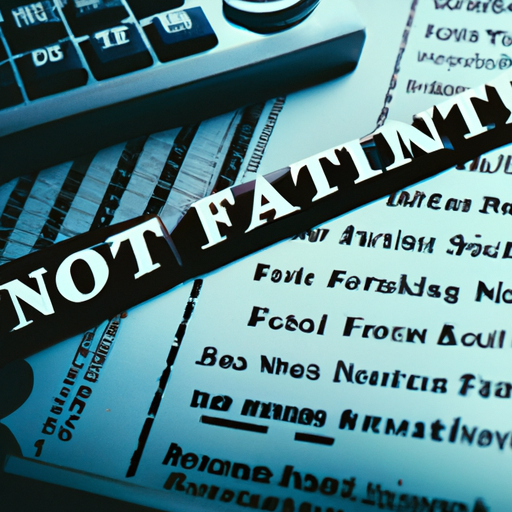One of the key things to research when performing investment due diligence on a bond is to evaluate the bond’s yield or interest rate return. This evaluation of a bond’s yield, however, can be performed in several different ways and lead you to different conclusions. Furthermore, specific types of yield calculation are more or less appropriate depending on the type of bond or fixed-income security that is being analyzed. Some of these different types of bond yields include among others, the so called running yield, nominal yield, yield to maturity (YTM), yield to call (YTC) and yield to worst (YTW). We will consider each of these and more below.
Key Takeaways
- A bond’s yield refers to the expected earnings generated and realized on a fixed-income investment over a particular period of time, expressed as a percentage or interest rate.
- There are numerous methods for arriving at a bond’s yield, and each of these methods can shed light on a different aspect of its potential risk and return.
- Certain methods lend themselves to specific types of bonds more than others, and so knowing which type of yield is being conveyed is key.
Running Yield
This is a measurement of a bond’s return or yield each year as represented as a percentage of the bond’s current market value or price. This is a fairly simple measurement that tells investors what they can expect for a return in the current market. When used to describe a portfolio, a running yield refers to the cumulative return or yield of all investments currently held within that portfolio. This may be somewhat similar to a dividend yield, but instead of describing individual assets, it describes the entire group represented within the portfolio as a whole. Typically, running yields are figured annually, but many investors calculate it more often than this.
Nominal Yield
Nominal yield is the return of a bond as determined by the percentage of the face value the bond’s annual coupon payments amount to. This means the nominal yield is effectively the bond’s coupon rate. This rate may or may not change depending on the type of bond:
- Fixed Rate Bonds: The coupon rate or nominal yield will be fixed and will not change over the lifetime of the bond.
- Floating Rate Bonds: The coupon payments/nominal yield will change over the life of the bond as dictated by changes in the referenced rate of interest.
- Indexed Bonds: The coupon payments/nominal yield will change in response to movement within its underlying index.
The effective yield is the return on a bond that has its interest payments (or coupons) reinvested at the same rate by the bondholder. Effective yield is the total yield an investor receives, in contrast to the nominal yield—which is the stated interest rate of the bond’s coupon. Effective yield takes into account the power of compounding on investment returns, while nominal yield does not.
Yield to Maturity (YTM)
YTM describes the average yield or return that an investor can expect from an issue each year if they (1) purchase it at its market value and (2) hold it until it matures. This value is determined using the coupon payment, the value of the issue at maturity, and any capital gains or losses that were incurred during the lifetime of the bond. YTM estimates typically assume that all coupon payments are reinvested (not distributed) within the bond. This figure is used to compare different bonds an investor is trying to choose between, and is one of the key figures compared between bonds. This is due to the fact it includes more variable than other comparable figures.
For example, comparing the nominal yield of two different bonds is only truly helpful when the bonds have the same cost, same life span and same return. However, if any of these are different, the YTM measure becomes a more effective comparison tool.
YTM is an example of what’s called a bond equivalent yield (BEY). Investors can find a more precise annual yield once they know the BEY for a bond if they account for the time value of money in the calculation. This is known as an effective annual yield (EAY).
The annual percentage yield (APY) is a calculation of the annualized real rate of return earned on an investment that takes into account the effect of compounding interest. Unlike simple interest, compounding interest is calculated periodically and the amount is immediately added to the balance. With each period going forward, the account balance gets a little bigger, so the interest paid on the balance gets bigger as well.
Tax-Equivalent Yield (TEY)
Municipal bonds, which are bonds issued by a state, municipality or county to finance its capital expenditures and are mostly non-taxable, also have a tax-equivalent yield (TEY). TEY is the pretax yield that a taxable bond needs to have for its yield to be the same as that of a tax-free municipal bond, and it is determined by the investor’s tax bracket.
Yield to Call (YTC)
Yield to call simply refers to the bond’s yield at the time of its call date. This value doesn’t hold if the bond is kept until maturity, but only describes the value at the call date, which if given, can be found in the prospectus of the bond. This value is determined by the bond’s coupon rate, its market price and the length of the call date.
Yield to Worst (YTW)
As the name suggests, yield to worst describes the worst possible yield for a bond without the issuer of the bond going into default. Investors determine this by imagining worst-case scenarios for the issue. These scenarios include all provisions included in the bond like a call, prepayment or sinking fund—anything that would negatively impact the bond’s yield. By knowing the worst yield possible, investors can see how their income will be affected and whether or not it will be sufficient to consider the issue. YTW calculations are determined for all possible call dates in order to provide as much information as possible to investors. It always assumes all conditions or provisions that can be enacted to decrease the yield will be enacted, such as for instance put provisions to lower the coupon rate based upon market conditions. It also assumes no recalculations happen in favor of the investor.
SEC Yield
While there are a lot of variations for calculating the different kinds of yields, a lot of liberty is enjoyed by the companies, issuers, and mutual fund managers to calculate, report, and advertise the yield value as per their own conventions. Regulators like Securities and Exchange Commission (SEC) have introduced a standard measure for yield calculation, called the SEC yield, which is the standard yield calculation developed by SEC and is aimed at offering a standard measure for fairer comparisons of bond funds. SEC yields are calculated after taking into consideration the required fees associated with the fund.
The Bottom Line
Though yield is not the only significant factor to consider when determining which security or issue to invest in, it is nonetheless an important one. The terms and conditions that come with a bond are often not insignificant when it comes to yield and therefore must be examined carefully when performing due diligence before deciding which bond to invest in.
Another significant issue that affects the bond’s yield is the fact of risk vs. return. As with all financial securities, the trade-off for greater security is less return. Therefore, it will always depend on the investor’s risk/return profile when it comes to setting a target yield. In each and every case, if a potential investor chooses to purchase higher-yielding or investment-grade bonds or a mixture of both, a profound professional analysis of each security is required.


